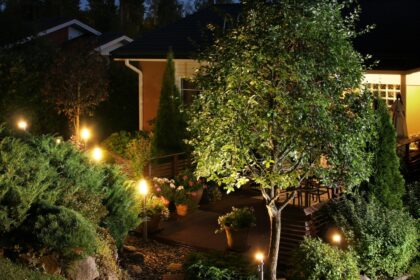If you’ve noticed raised tunnels, uneven patches, or piles of dirt in your Brooklyn, NY lawn or garden, moles may be the culprits. These small, burrowing mammals are often misunderstood — while they play an important role in nature, their digging habits can cause significant damage to lawns and gardens, frustrating homeowners and gardeners alike.
Understanding why moles cause damage is the first step toward effective mole control. In this post, we’ll explore the reasons behind mole damage, the signs to watch for, and how professional mole control services in Brooklyn can help protect your outdoor spaces.
What Are Moles and Why Are They In Your Yard?
Moles are small mammals that live underground, feeding primarily on insects, grubs, and earthworms. Their natural digging behavior is aimed at creating tunnels to hunt for food and move safely beneath the soil surface. While moles do not eat plants or roots directly, their constant burrowing can disrupt the soil structure, damage roots, and make lawns uneven.
In Brooklyn, NY urban environment, moles are often attracted to yards and gardens that offer a steady food supply and soft soil that’s easy to tunnel through. A healthy garden with plenty of insects is a mole’s ideal habitat.
Why Do Moles Cause Damage?
The damage caused by moles is mostly indirect but still very visible and troublesome:
Tunnel Construction: Moles dig extensive networks of tunnels just below the surface. These tunnels can cause soil upheaval, making your lawn look uneven and bumpy.
Raised Mounds: As moles tunnel, they push soil to the surface, creating molehills. These mounds can disrupt the smooth appearance of your garden or lawn and interfere with mowing or walking.
Root Disturbance: While moles don’t eat roots, their tunneling can damage the root systems of grass, plants, and flowers, causing them to weaken or die.
Attracting Other Pests: Mole tunnels may attract other pests like voles and insects, which can further harm plants.
This damage can be frustrating for Brooklyn homeowners who take pride in well-maintained lawns or productive gardens. Fortunately, mole control can minimize or eliminate these issues before they worsen.
Signs You Have A Mole Problem
If you suspect moles are damaging your lawn or garden, look for these signs:
Raised, winding tunnels or ridges just under the soil surface
Multiple molehills scattered across your yard
Damaged or dying patches of grass or plants with disturbed roots
Soft, spongy areas caused by tunnel collapse
Presence of insect pests that feed on plant roots
If you notice any of these signs, it’s a good idea to consult with a mole control specialist in Brooklyn to assess the situation and recommend appropriate solutions.
Effective Mole Control Services in Brooklyn, NY
While some homeowners try DIY methods like traps or repellents, these often provide only temporary relief. For long-lasting results, professional mole control services are the best choice. Experts in Brooklyn have the knowledge, experience, and tools to manage mole populations safely and effectively.
Professional mole control typically includes:
Inspection and Identification: Thorough inspection of your lawn and garden to confirm mole activity and assess damage.
Targeted Trapping: Humane and effective trapping techniques to capture and remove moles from your property.
Soil Treatment: Applying deterrents or treatments to discourage mole return without harming your plants or pets.
Preventative Measures: Guidance on lawn maintenance, soil care, and habitat modification to make your yard less attractive to moles.
By working with local professionals, Brooklyn homeowners can restore their lawns and gardens to a healthy, mole-free state.
Tips for Preventing Mole Damage
In addition to professional mole control, you can take some steps to make your property less inviting to moles:
Reduce grub populations in your soil with natural or chemical insecticides (moles feed on grubs).
Maintain a well-irrigated lawn but avoid excessive watering which softens soil and encourages tunneling.
Keep your garden free of debris, rocks, and thick vegetation where moles can hide.
Use mole deterrents like castor oil-based products, available at garden centers, as a temporary measure.
While prevention alone may not solve a mole problem, combining these tips with expert control methods is the best approach.
Conclusion
Moles may be small, but their impact on lawns and gardens can be significant. Their natural digging behavior disrupts soil and plant roots, causing unsightly damage that can frustrate homeowners in Brooklyn, NY. Understanding why moles cause damage is essential for taking timely action.
Professional mole control services offer effective, humane, and lasting solutions to protect your lawn and garden from mole damage. Combining expert treatment with preventative measures helps keep your outdoor spaces healthy and beautiful year-round.
Don’t let moles ruin your Brooklyn property—reach out to trusted mole control professionals today to safeguard your yard and enjoy a mole-free garden.
Frequently Asked Questions (FAQs)
Q1: How can I tell if I have moles or another burrowing pest?
Moles create raised tunnels and molehills, whereas other pests like voles leave surface runways and nibble on plants. A professional can help identify the culprit.
Q2: Are moles harmful to my plants?
Moles don’t eat plants directly but their tunneling can damage roots and soil structure, harming your plants indirectly.
Q3: Can I use DIY mole traps?
DIY traps may work temporarily but usually don’t solve the problem fully. Professional trapping is safer and more effective.
Q4: How soon can mole control fix my lawn?
Results vary depending on infestation size, but many homeowners see improvement within a few weeks after professional treatment.
Q5: Is mole control safe for pets and children?
Yes, licensed mole control services use safe methods that protect your family and pets.



